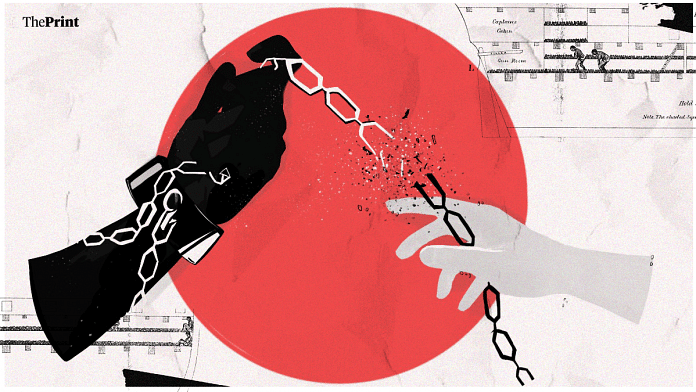On the intervening night of 22 and 23 August, 1791, slaves in the French colony of Saint-Domingue (in present-day Haiti and the Dominican Republic) began a historic, successful rebellion that would eventually lead to the colony’s independence.
Although it would take Britain more than two decades and the US even longer to outlaw slavery within their own borders, the Haitian Revolution has been hailed by French, British and American abolitionists as a defining moment in the history of the world. This is why 23 August has been designated by UNESCO as the International Day for the Remembrance of the Slave Trade and its Abolition.
This year, the theme is ‘Confronting Slavery’s Legacy of Racism Together, something that has assumed even greater significance in the year of George Floyd’s murder at the hands of the police in the US and the effect the Covid pandemic has had on the lives of people who already face stigma and racism in so many ways.
The theme reminds us that although slavery may have been abolished, its impact remains to this day, and to understand where to go from here, it is important to examine history with a critical, unflinching mind and see how centuries-old ideas still have the power to affect lives.
Life on a slave ship
From approximately 1525 to 1866, more than 12 million slaves were forcibly transported from West Africa to the Americas. An estimated 2 million died along the journey either from malnutrition or diseases like measles, scurvy and smallpox, and those who survived endured horrifically unhygienic living conditions and physical abuse.
Based on an 18th-century blueprint of a slave ship, Plymouth-based abolitionists in the 1780s described how lower decks were stuffed with “a number of human creatures, packed, side by side, almost like herrings in a barrel, and reduced nearly to the state of being buried alive”.
Other European powers like Portugal, Spain, Britain, France and the Netherlands also used slave labour to create wealth in their own colonies by forcing slaves to work on sugar, tobacco and cotton plantations.
George Floyd and the global cry of ‘I can’t breathe’
The Plymouth-based abolitionists published a “plate” of a British slave ship in 1788, which showed that the vessel did not follow the stipulated ‘one slave to one ton’ rule as outlined in Britain’s Slave Trade Act (1788). Although the plan showed the stowage of 454 slaves, the ship reportedly carried as many as 609. The visual one pictures is of people suffocating, unable to breathe.
Centuries later, another Black man died because he couldn’t breathe. The difference is that this happened in 2020, in a time when slavery had long been abolished and the man was, in theory, a free and equal citizen of his country.
George Floyd’s death as a result of a police officer kneeling on his neck for over eight minutes, spurred a wave of protests across the US. His last words, “Please, I can’t breathe”, became a battle cry for coloured communities and human rights activists across the world.
Floyd’s death prompted other countries to reckon with issues of systemic racism, injustice and the ugliest remnants of colonialism. People in more than 60 nations came out onto the streets in solidarity.
Large murals and graffiti of Floyd have also emerged on the streets of Syria, Britain, Germany, Pakistan and Kenya. A former slave trading post off Senegal’s coast renamed its main square in order to stop ‘celebrating the persecutor’. Several statues of Confederate figures, colonists and slave traders, from King Leopold II in Belgium to Christopher Columbus, were defaced or toppled by protestors across the globe, leading to wider questions of how to grapple with history.
Also read: Stop cheering police brutality. Citizens like Jayaraj and Bennix pay the price
Black lives in India
From attacks on Black people in India, and even people from India’s own Northeast, to the obsession with fairness creams and the ‘Monkeygate‘ cricket scandal, India has been no stranger to racism. Even today, few Indians acknowledge the Siddis, a community of African descent that has lived in India for centuries.
Though there are varying historical accounts, Siddis are said to have been brought to India 300-500 years ago by the Portuguese. Hailing from Bantu tribes of sub-Saharan Africa, Siddis were sold as slaves to Indian rulers but many rose to be noblemen, commanders, soldiers and admirals. In the mid-1800s, however, when slavery was outlawed, Siddis fled to the thick jungles fearing they would be recaptured and tortured.
Today, there are more than 50,000 of them living in Karnataka, Gujarat, Goa and Maharashtra, working mainly as unskilled labourers, farmers or domestic workers. In late July this year, a man called Shantaram Budna Siddi became the community’s first politician, nominated to the Karnataka Legislative Council.
Saver Louis Birji Siddi, the head of a group representing the interests of the community, said at the time, “We are thrilled that after so many years of being part of India, having given our sweat and blood to the country, our community has finally been recognised.”



